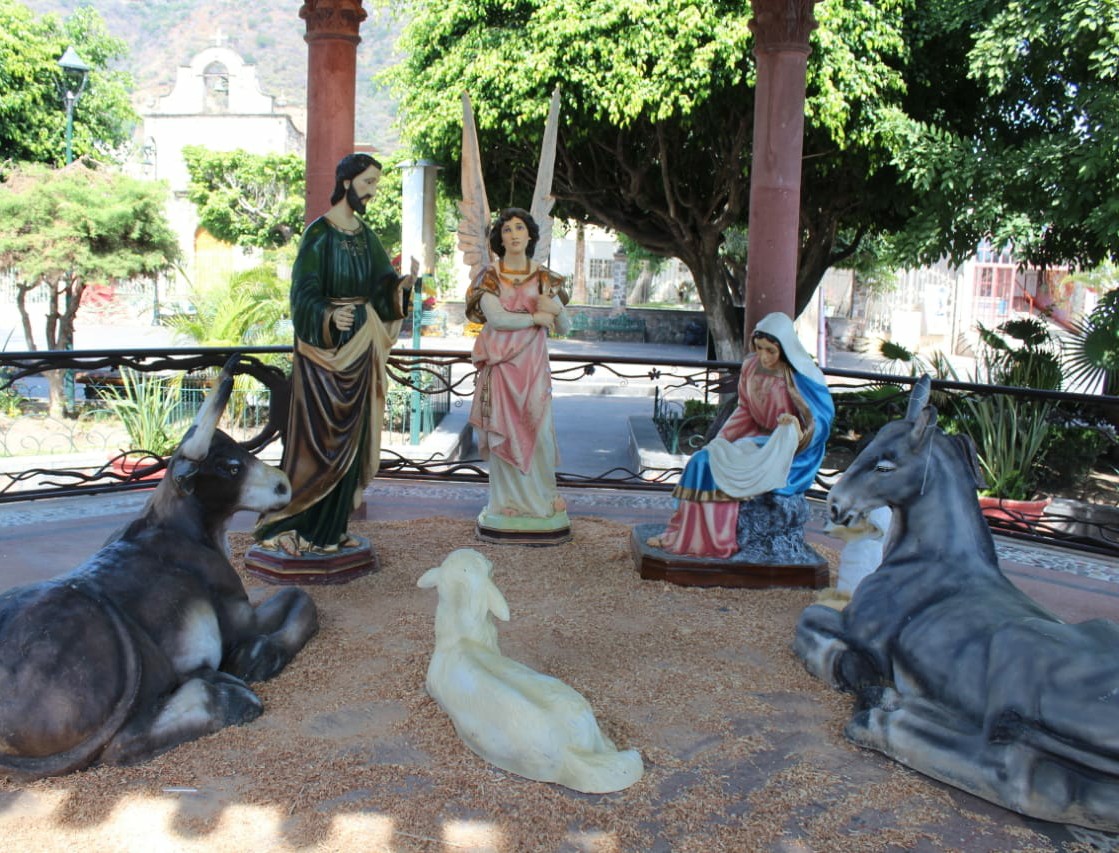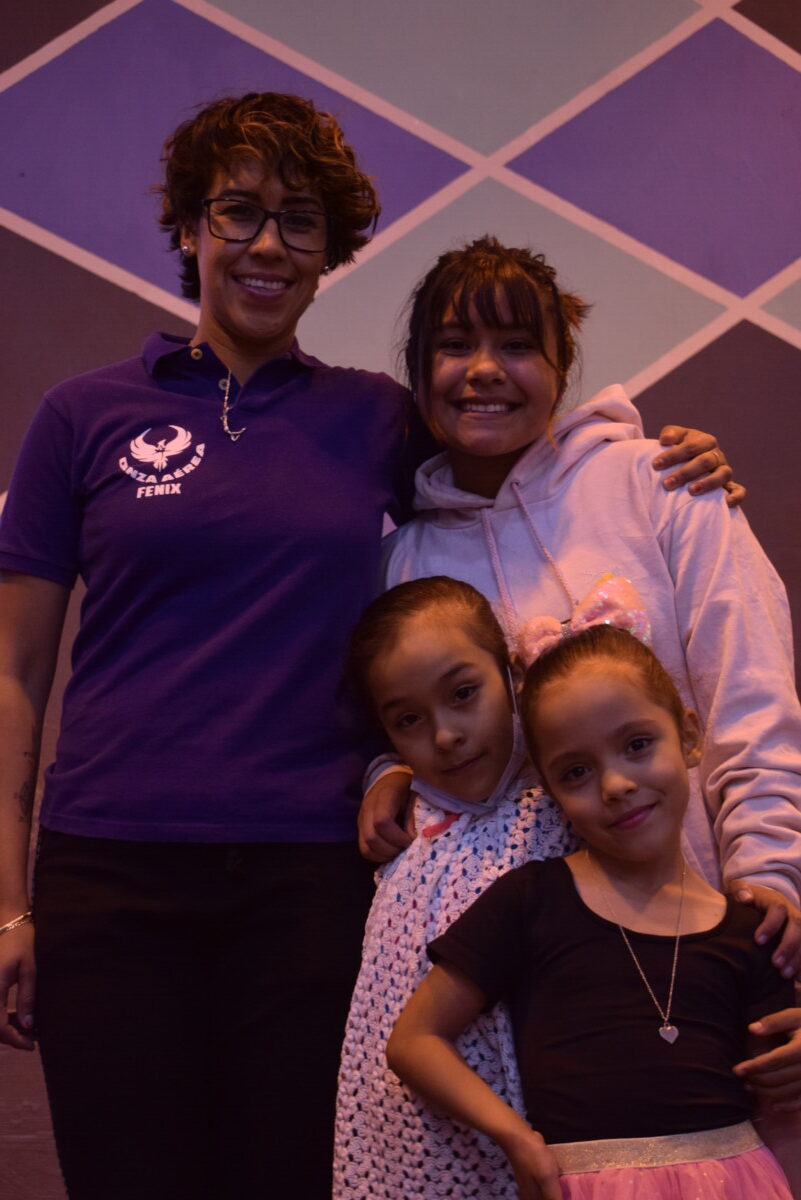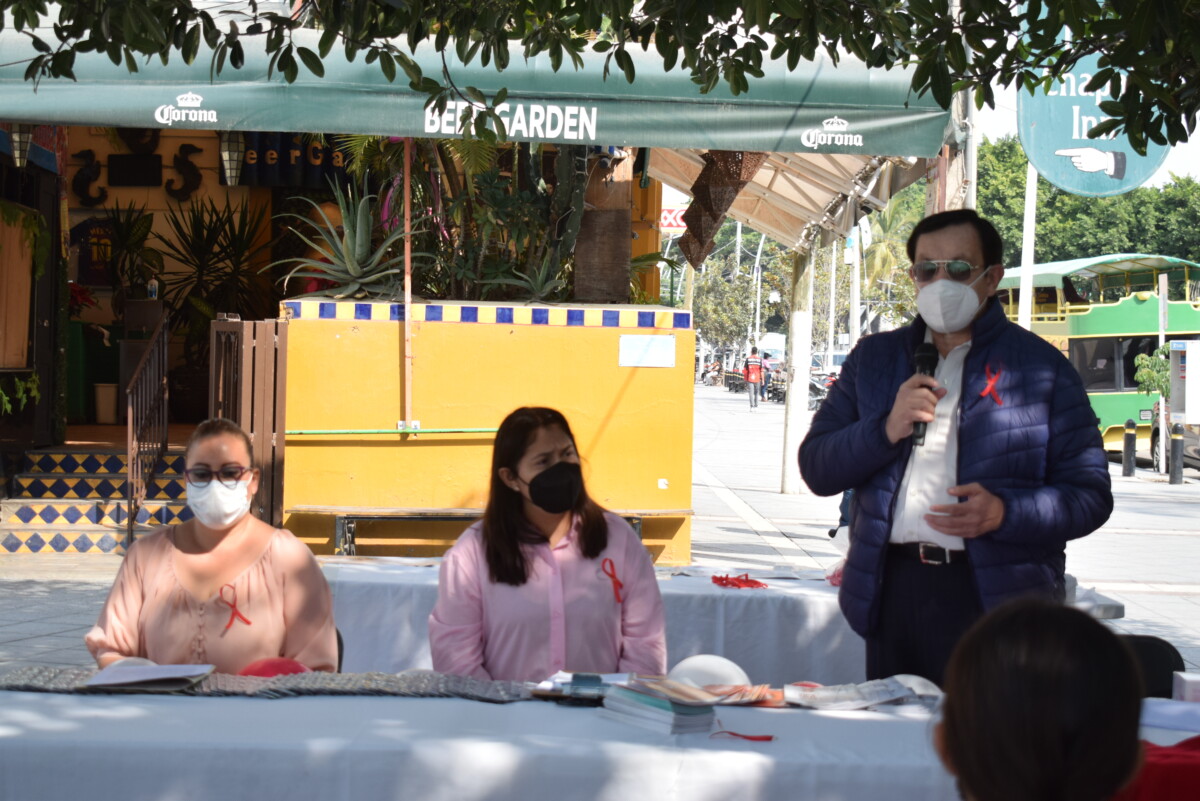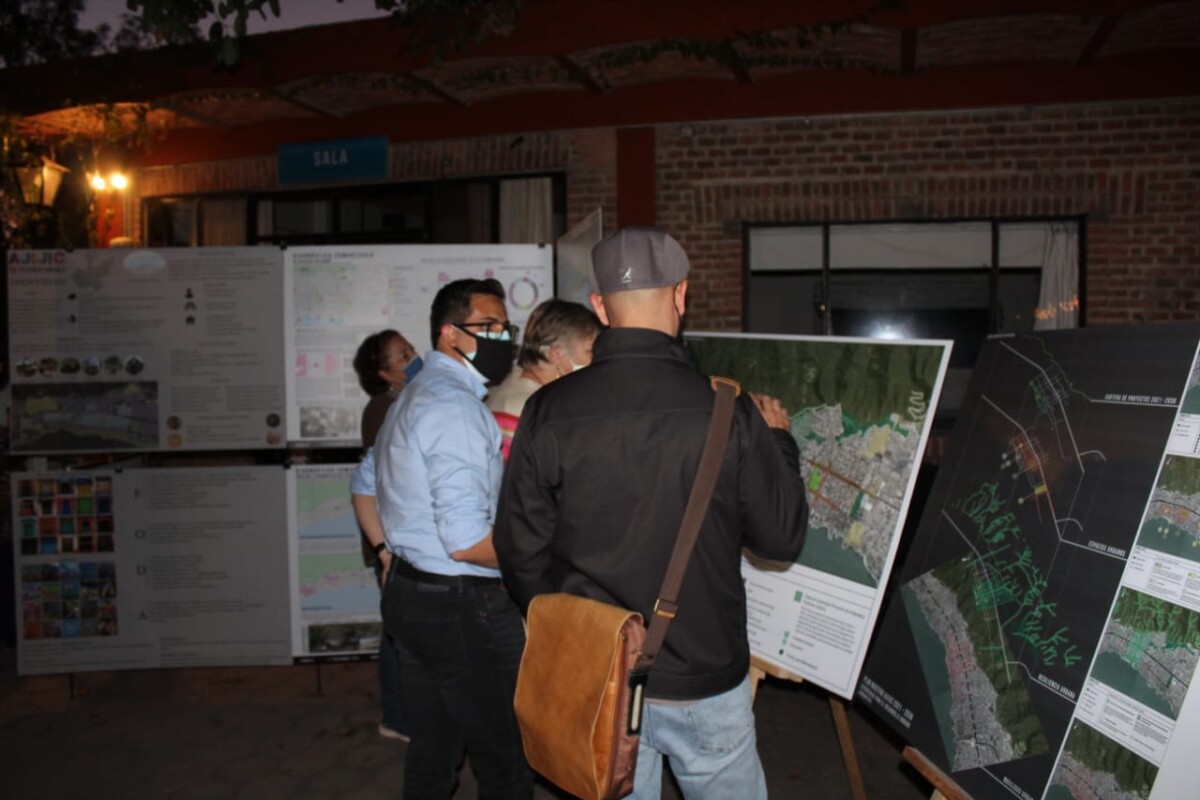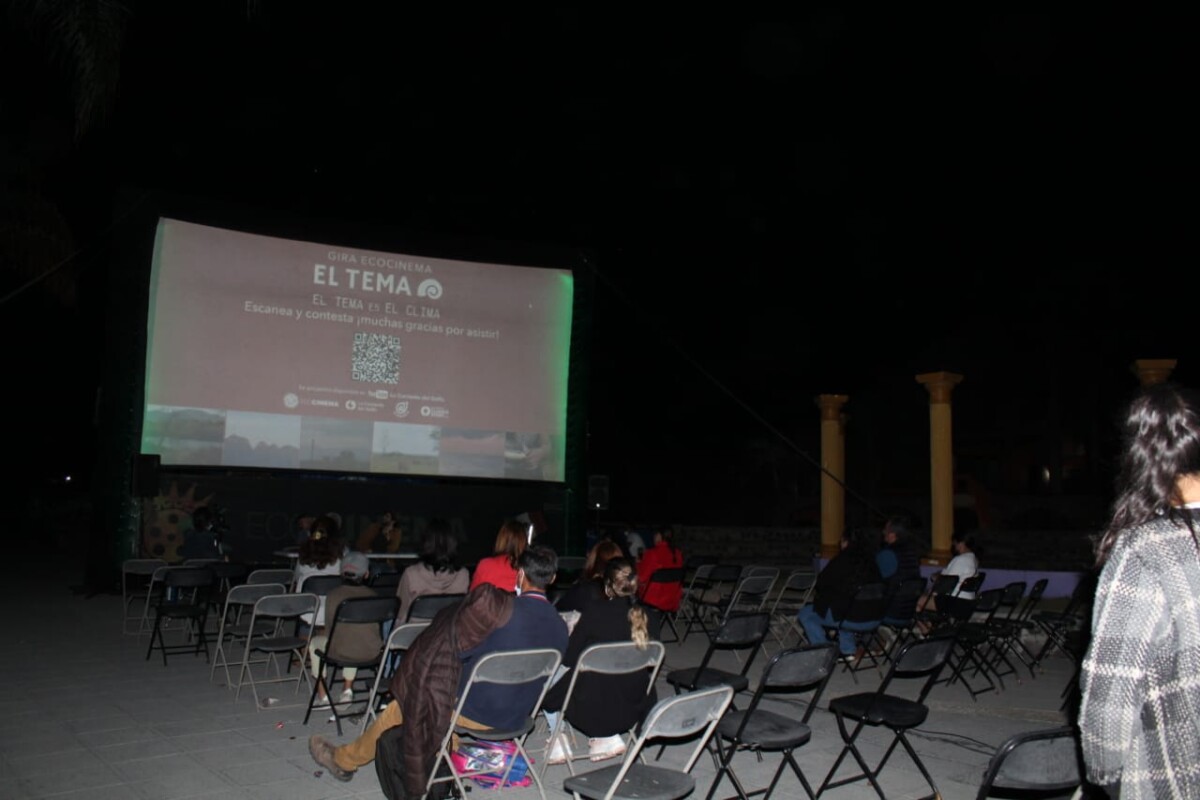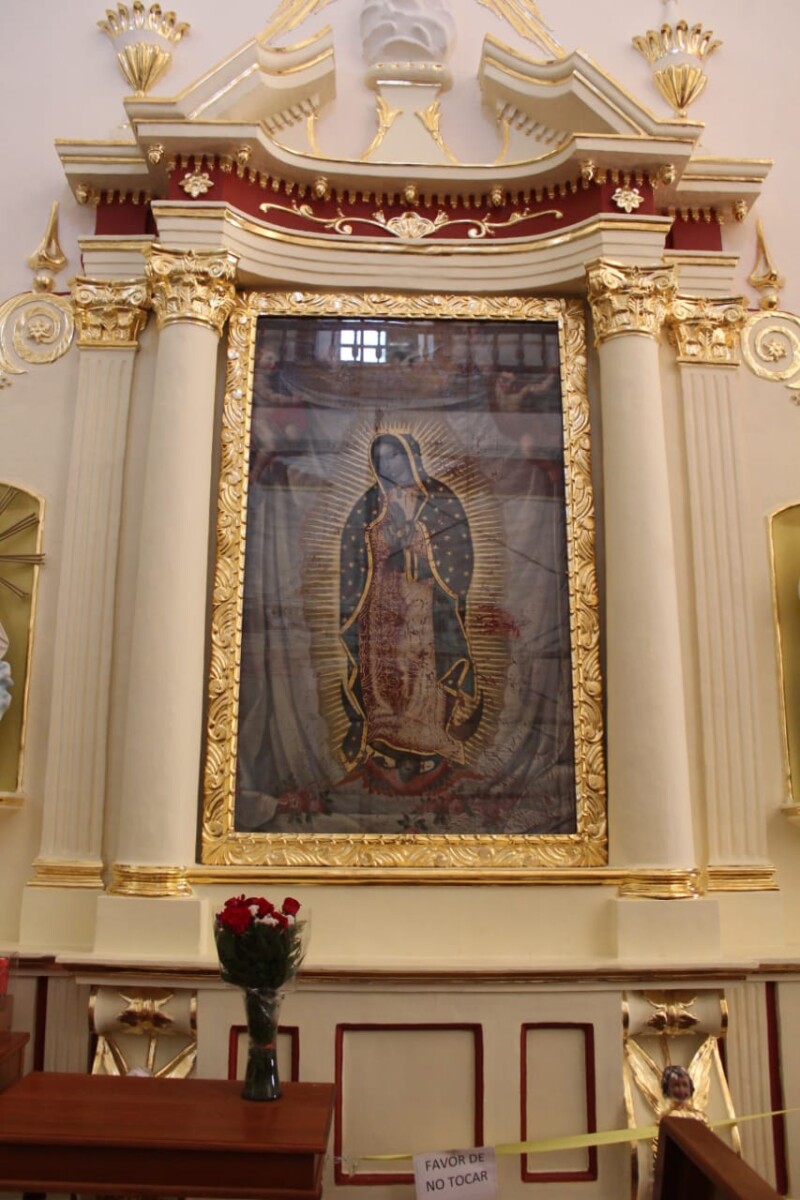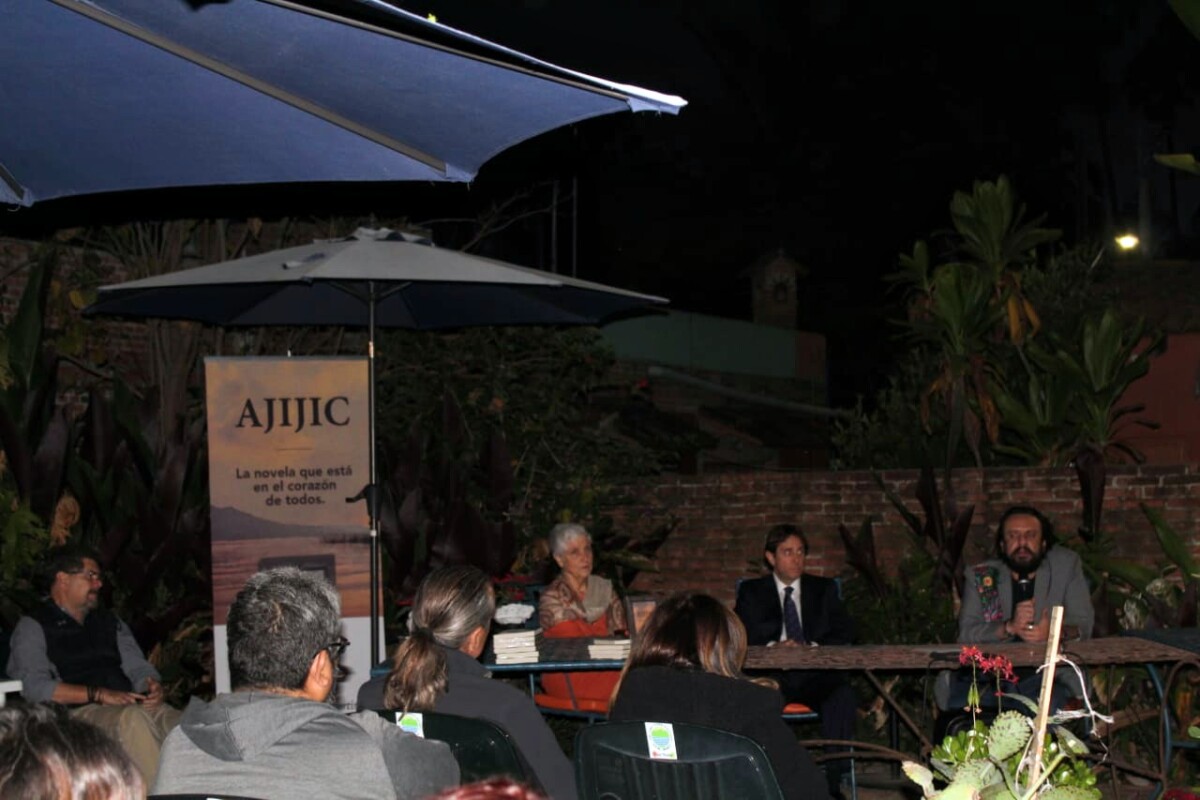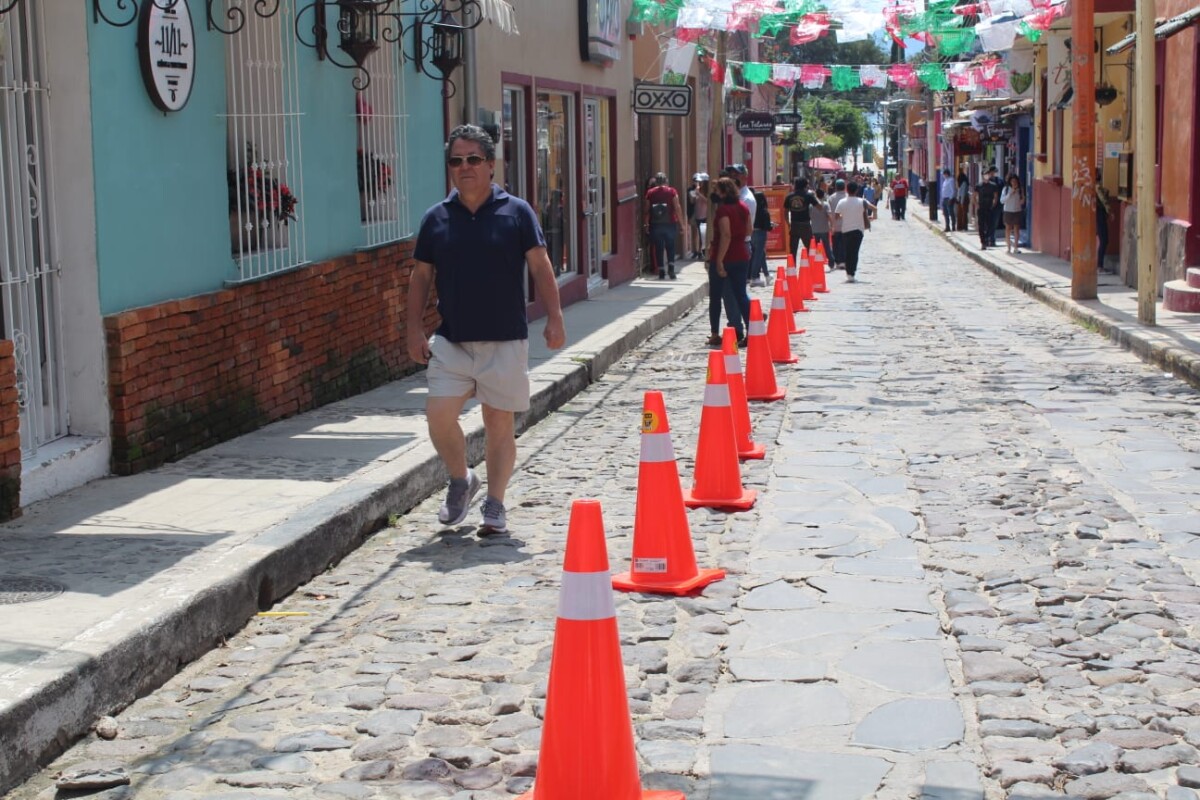en inglés
Christmas is celebrated in Ajijic with multiple events
Nativity in process of placement, in the kiosk of the main square.
Sofía Medeles (Ajijic, Jal.)- Unlike last year, this Christmas will be celebrated in Ajijic with multiple events, according to Maximiliano Macías, who said that in the coming weeks there will be posadas and concerts for the people to enjoy.
Among the activities already scheduled is a Christmas carol concert, to be held on Saturday, December 18, starting at 7:00 p.m., in the esplanade of the main square. A Christmas Expo of the artisans of the Malecon to raise money for a children’s posoda is tentatively scheduled from December 12 to 15.
Two posadas and a meal for seniors in the square are planned by Ajijic and DIF Ajijic. One posada for children is set for the main square and the other in the chapel of the Sacred Heart, in La Canacinta, which will be supported by the proceeds of the Christmas Expo, thanks to the artisans who decided to donate them.
«The posada in the plaza will have a jumper, they will be given candy and there will be piñatas, although these will not be broken until January 6. The date for the posada for seniors will be announced when we get the budget for the food,» announced Max.
As for the religious celebrations, like the living nativity scenes, they still have no information from the notary’s office.
The schedule of Christmas events for Ajijic can be found on the Facebook page: Delegación Ajijic 2021-2024.
Translated by Patrick O’Heffernan
Chapala wins national aerial dance competition
Teacher Consuelo Janeth Puebla López hugging Sofia Sanchez, (below) Samantha Gonzalez and Priscila Desales
Jazmin Stengel. – Four members of the Fenix Academy represented Jalisco in the Gold Cup last November 27 in Mexico City. All of them won a place on the podium, which positioned the school nationally as one of the two best among the 28 participating academies.
The young girls, eight-year-old Samantha González who was recognized with an honorable mention of excellence during the competition in the intermediate category, and Tania Torres, first place winner in the professional category 24 and over, won their direct pass to the international competitions as a prize.
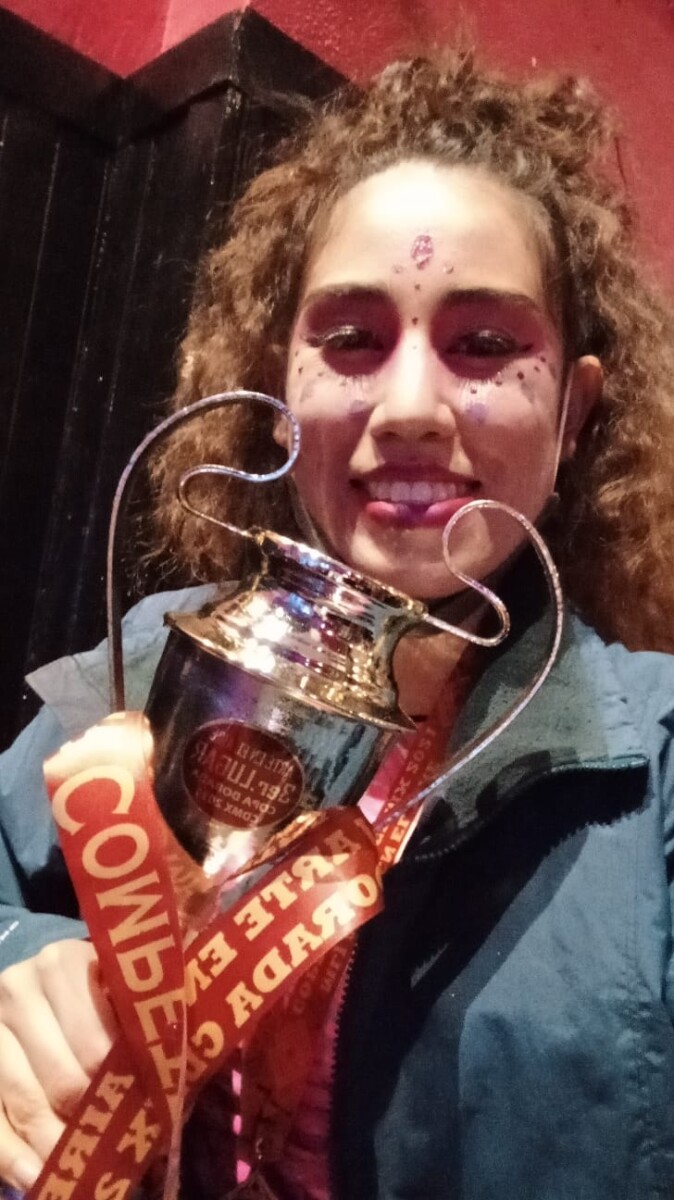
Tania Torres, who won the professional category at the 2021 Gold Cup
«We entered Tania in the advanced category and when we arrived, they told us she was already going to the professional category. ‘Great!’», exclaimed teacher Consuelo Janeth Puebla López, recalling the experience.
Moreover, Sofía Chávez, 14 years old, took first place in the beginners. She will still have to compete one more time in Guadalajara in one of the national competitions in the next few months in order to get the necessary experience, and obtain her pass to the international competition.

Jazmin Flores, soon to compete at the international level, already has her direct pass.
In the same way, six-year-old Priscila Desales will compete once again for her pass. Despite having the quality, the judges of the ‘Gold Cup’ competition decided to place her in third place among the beginners, because «she is too good for her category,» said teacher Janeth Puebla López.
Although the arbitrary decision of the judges led to minutes of tension, «It was the teachers from other academies who recognized Priscila as the best in her beginner category,» noted the teacher Janeth, who also confessed to respecting the jury’s verdict.
Jazmín Flores, 21 years old, was absent in the last competition. However, she already has her pass to the international competition guaranteed. «I’m nervous, but being there, it’s something else,» said Jazmín who looked at her teacher. Both smiled, as did the other dancers.
Translated by Sydney Metrick
Chapala adds two new HIV/AIDS cases to the 100 already registered by COMUSIDA
Representatives of COMUSIDA Chapala coordinated the commemorative event.
Jazmín Stengel – During the commemoration of the International Day for the Fight Against HIV/AIDS, the municipality of Chapala has added two new cases to the one hundred already registered by the Municipal AIDS Council (COMUSIDA).
The representative of the municipal agency, Felipe Ramírez Torres reported the detection of two new cases of this disease in recent dates, which were detected during the campaigns against Syphilis (70 tests) and Hepatitis C (100 tests) in the municipality.
The results revealed that one baby was born with the acquired immunodeficiency disease because the mother was already infected, explained Ramírez Torres during the commemoration of the international day that the Municipality held on the boardwalk of Chapala.
Although with a small audience, the representative Mariana Mendoza in the absence of the councilor for Human Rights, Isabel Mendoza, explained the medical procedures that a person must follow when diagnosed, as well as how to lead a safe sexual life no matter how «open-minded» it may be, it was said repeatedly by the officials.
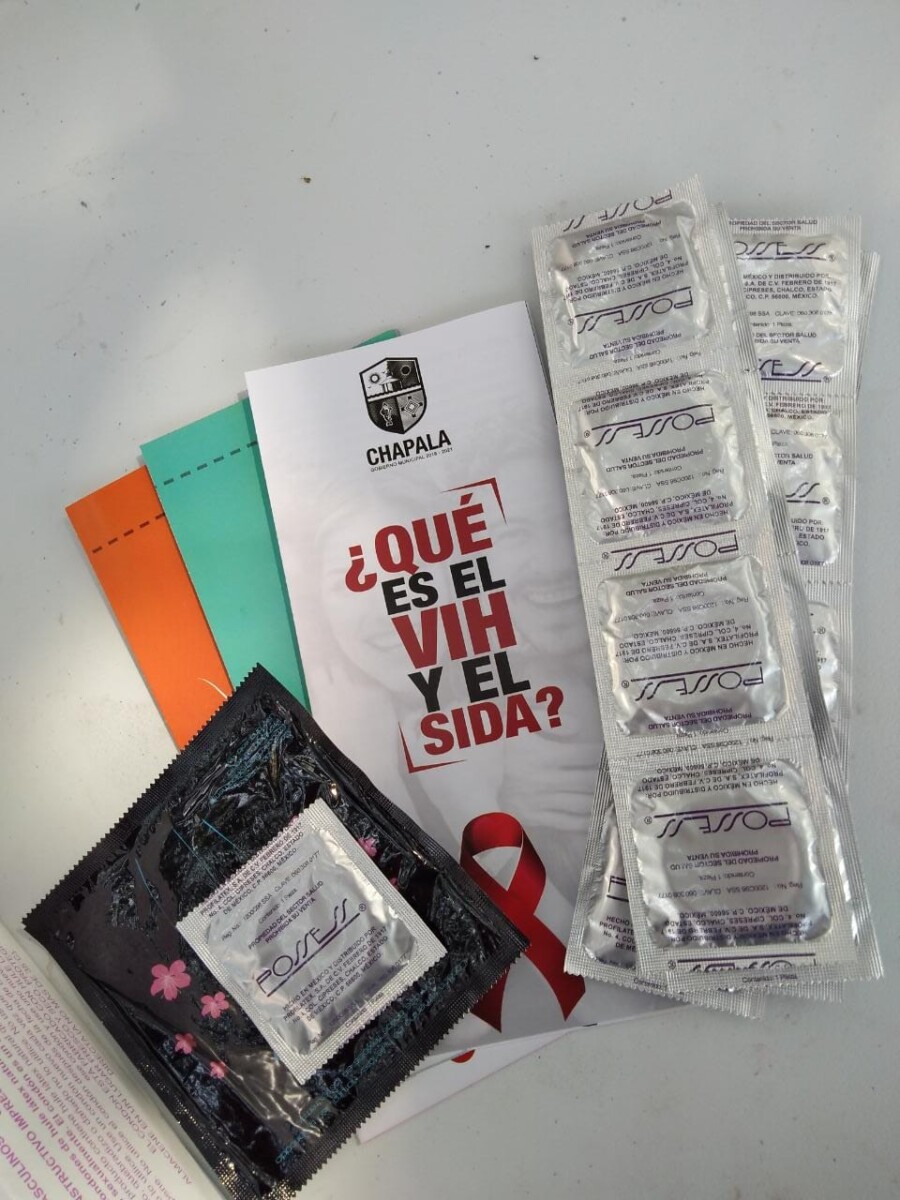
During the commemoration, both male and female contraceptives were distributed and free HIV tests were given.
For every confirmed case of HIV/AIDS, it is estimated that there are at least two more that have not been reported, so Felipe Ramirez estimates that in the municipality there are likely close to 300 cases.
During the event highlighted by an inclusive speech by the municipal authorities, they stressed that anyone can become infected with HIV, regardless of sexual orientation.
Of the 125 municipalities in the state of Jalisco, only half including Chapala have a COMUSIDA unit. At the unit, 100 rapid tests are always accessible to the population for free testing.
Translated by Kerry Watson
Architecture students present their vision for the future of Ajijic
Students present their projects at the Lake Chapala Society.
Sofía Medeles (Ajijic, Jal.)– Architecture students from the Tecnológico de Monterrey (TEC) presented their vision of Ajijic in 2016, 15 years from now. Taking into account Ajjic’s designation as a Magical Town, the projects suggest ways to improve the quality of life. The twelve projects presented included rainwater treatment systems, a truck station, a geriatric medical center, an integral transportation plan, a botanical garden, and a recreational center for the elderly.
Professor Luis Márquez, who is in charge of the projects, and the academic representative on the Publico Magico Committee, León Felipe Muñoz, commented that these conceptual visions and urban master plans are based on research in the community.
The president of the committee, Alejandro Sahagun, expressed his hope that the vision will reach more people, and that this academic exercise will serve as a base to consider fundamental community issues such as education, culture and the quality of life, as well as establishing a plan for members of the committee to pursue.
Translated by Elisabeth Shields
An ecological film is screened to raise awareness of the country’s problems
The web series El Tema was presented on the Ajijic boardwalk on Tuesday, December 7.
Sofía Medeles (Ajijic, Jal.)– As part of the promotional tour of the web series El Tema, the documentary was screened at different points in Chapala, including the Ajijic boardwalk, with free admission; the event was attended by the director and one of the interviewees of the documentary.
The web series -which is available for free on the web page of and on YouTube as El Tema, was presented in front of the theater on the Ajijic boardwalk, on an inflatable screen. The documentary deals with issues of environmental importance in different contexts (production, energy, food, etc.), and different places, including Jocotepec.
The presentation was attended by the screenwriter of the film, Pablo Montaño Beckmann, and Jaime Morales, PhD in Agroecology, who were interviewed in the series, who, at the end of the event, spoke and answered questions from the audience.
In the question and answer session, they touched on issues involving the damage to the environment in Ajijic, such as the invasion of the coastal zone, as well as the mountains to build houses, subdivisions, etc., as well as advice on how to be environmentally responsible people.
Translated by Patrick O’Heffernan
Ajijic Pueblo Mágico announces work to be done in the coming year
Members of the Pueblo Mágico Citizen Committee and state officials. From left to right: León Felipe Muñoz, Mauricio Servín Carreón, Mónica Venegas, Citlalli Morales, Alejandro Sahagún, Pilar Posada, Juan Macías, Karla Terriquez, José Manuel González and Antonio López Vega.
Sofía Medeles (Ajijic, Jal.)- The director of the Ajijic Pueblo Mágico Committee, Alejandro Sahagún, announced the committee’s work program for 2021.
During a meeting held last Wednesday, December 8, nine work plans were presented. The first three correspond to the creation of three catalogs: urban art heritage, landscape and native trees, and the natural and built heritage. An example given for the latter is the restoration of the Chapel of Our Lady of the Rosary.
As for art, culture and people, there are four points:
One: art fairs to support local and emerging art. A pilot was held last November 20 and 21. The plan calls for fairs every four or five weeks in the main square.
Two: artistic creation workshops. Locations will rotate to bring art to the entire delegation.
Three: human heritage of the town. Examples include the bakery of Tachihual, the oldest local artists, recognized characters of the town, etc.
Four: cultural exchange with other Magical Towns. This will include multiple festivals featuring music, art and gastronomy.

Master Planning event for Ajijic 2021-2036, where the committee announced the work program for 2022.
The two final points deal with using academic resources to implement complete information about the direction Ajijic should take without losing its essence, and holding citizen assemblies to listen to suggestions and concerns of the Ajijitecos. The first assembly will be held Tuesday, January 11, at a location which has not yet been announced.
Alejandro Sahagún announced that the program of activities, with dates and places of official events, will be published on the Facebook page called “Comité Ciudadano Ajijic Pueblo Mágico.”
Translated by Elisabeth Shields
Who should pay when you sit in traffic on the Carretera?
By: Patrick O’Heffernan
In 1976 I was sued for $7 million by a group of developers. I was an elected director of a 50,000-person water district in California which was facing a severe drought that threatened drinking water and fire protection water supplies for our residents. It was the fire protection issue that helped us solve the problem.
The district was sprouting new homes, but they demanded water. Our projections showed that continued growth would crash our system, so we activated the state law that allowed us to block development that threatened fire protection supplies. Developers sued us, individually and as a board. We won and halted new construction and the growth in water use. To prevent another crisis, we and the county enacted water conservation measures on existing and new developments which developers had to pay for. It worked, and the district population continued to grow with adequate water.
There is a lesson here for Lakeside.
Have you ever waited 40 minutes to get from downtown Chapala to downtown Ajijic and cursed the 24/7traffic? According to the 2020 Census, Chapala has grown 13% in the past decade, San Antonio Tlayacapan 33%, and Ajijic by almost 15% . All those new people drive, but the roads have not grown .
The same can be said for water, the electricity grid, law enforcement, courts, fire protection – little or no growth in them to meet population increase.
The infrastructure picture is not all bad; the region has added 3 new hospitals, the cyclopista, new internet companies, and SIMAPA is connecting a new well in Ajijic.But the improvements don’t match the population growth. Homes, condos, and apartments are going up all over Lakeside –e.g. a monster new development will soon open in San Antonio Tlayacapan, dumping dozens of cars onto the Carretera every day.
The answer is not to stop growth – that won’t happen and shouldn’t. The answer is to plan for it and build for it. A tool for this is the community infrastructure impact statement and impact fees. Every new development would be required to pay the municipality a permit fee to project its impact on the infrastructure. Based on the findings, the municipality imposes a fee that is paid into a fund to pay for infrastructure upgrades from street repair to more police, to new water pipes.
Developers will claim that this raises housing prices. It won’t; the market determines prices. What impact fees do is prevent developers from externalizing the costs of their community impact onto residents. Impact fees make developers pay their real costs – which will reduce their profits – but it can also incentivize them to reduce their impacts with things like low water use fixtures and gardens, condo-based shuttle buses, and power-shaving lights. The municipality can also use the impact reports to help project future growth and plan projects to accommodate and guide it.
We all pay for the impact of new development in time wasted in traffic, electricity outages, water shortages, and shock absorbers. It is time to plan instead of pay.
Niches of the parish of St. Andrew the Apostle are restored with gold leaf
Image of the Virgin of Guadalupe, possibly from the 18th century, in her recently restored niche.
Sofía Medeles (Ajijic, Jal.)– Over the past few months the niches holding religious icons and images in the parish church of San Andrés Apóstol have been covered with gold leaf. The pottery technique used for the láminas de oro involves applying and burnishing the applique to give it a brilliant shiny surface.
Fernando and Hugo, workers who live in the Archdiocese of Guadalajara, told Laguna that they have worked on the main altarpiece, the niche of the Virgin of Guadalupe – an image that possibly dates from the 18th century-, and are currently working on the niche of the Sacred Heart, immediately on the left side of the altar.
«For the moment we are doing well, but the work on the other niches will depend on donors financing it,” said Fernando, who said that the work is being paid for by benefactors from Ajijic and another part is being paid for by the parish. Fernando added that by the year 2022 the site where the image of the Sacred Heart rests will be finished, and they will learn whether to continue or stop for the time being.
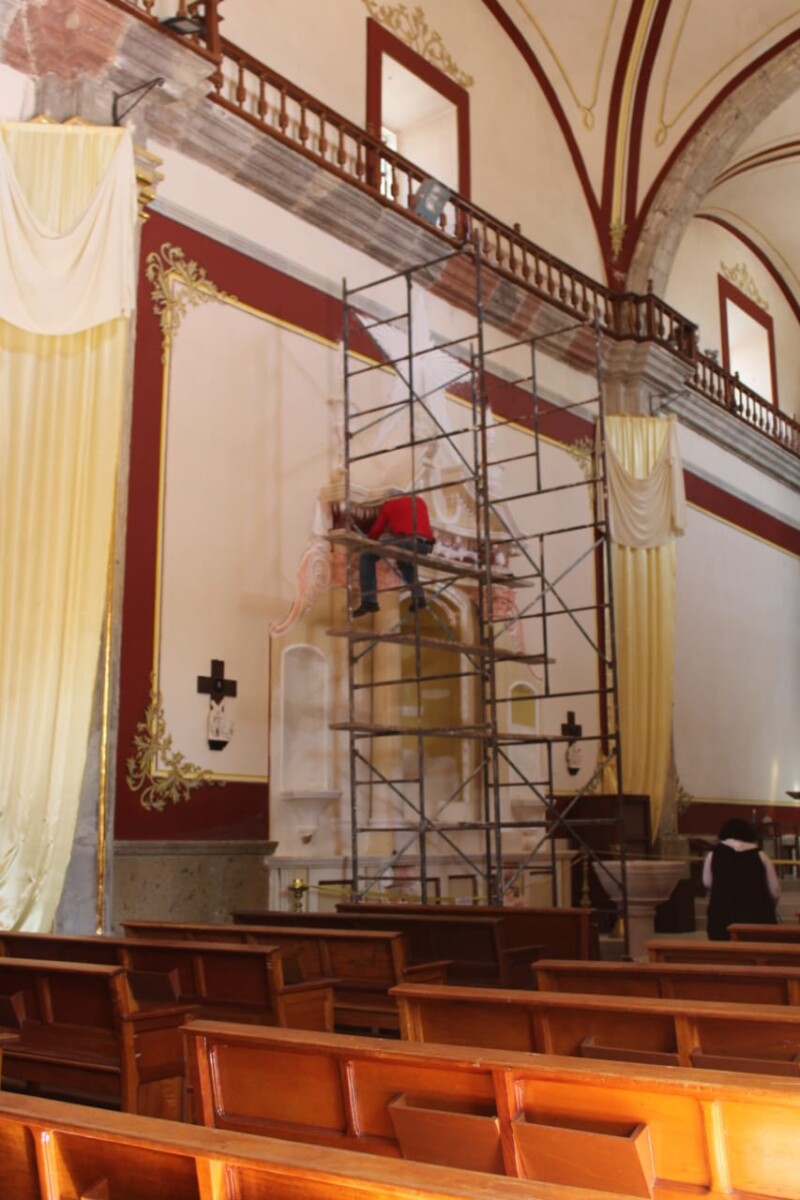
Intervention work in the niche of the Sacred Heart.
The current coordinator of cultural heritage of Chapala, Antonio Velazco, a restorer and conservator by profession, said that the approximate age of the image of the Virgin Guadalupe was 18th century He said hat maintenance actions such as removing dust from an image, are allowed, however, restoration must be authorized and subsequently supervised by the National Institute of Anthropology and History. However, because of the care and precautions taken for the image’s removal and storage to protect it from work in progress, permission was not needed from the National Institute of Anthropology and History (INAH).
Translated by Patrick O’Heffernan
Tapatio writer presents book inspired by the cultural coexistence in Ajijic
Patricio Fernández Cortina, center, author of the book «Ajijic».
Sofía Medeles (Ajijic, Jal.)- In a special evening at the Lake Chapala Society (LCS) Patricio Fernández Cortina, a lawyer by profession and a writer by passion, presented his first novel, which is inspired by Ajijic, the Magical Town on the banks of Lake Chapala . The book tells the story of Bob, an Expat living in Ajijic who embarks on a journey to find his roots in New York, which allows him to clearly see his true cultural duality.
Patricio Fernández Cortina, speaking in front of approximately 30 people at the book signing, explained that t he was inspired by this town’s picturesque streets and beautiful qualities like the coexistence that exists between foreigners – whom he called “lakesiders” – and the native Mexicans, both working together in the cultural activities of the town.
Fernández Cortina stated that he got to know Ajijic, since his wife has a house in the La Floresta subdivision, and from his visits, he found a space to remain inconspicuous and observe the coexistence, which he described as «peculiar and magical».
He said that the idea for the story had been in her head for about five years; however, it took him a year to write it.
«When I arrived, I thought that the “lakesiders” came to Ajijic to live their last days in peace, but when I observed them I discovered that they come to live,» he said, referring to the lifestyle they adopt when they arrive, getting involved in traditions and celebrations.
The writer indicated that in the book he portrayed the traditions of Ajijic and made multiple references to prominent people of the town who inspired him, as well as musical references to popular songs that describe the moments of the story.
He said that the book will be on sale in Spanish and English at the Lake Chapala Society (LCS) library for 350 pesos. The book can also be purchased at Gonvill bookstores and digitally at Google Books for 179 pesos.
Translated by Patrick O’Heffernan
The Ajijic pedestrian walkway will be reinstalled as part of the Christmas tourist preparations
Andador de Ajijic in previous weeks. Photo: archive.
Sofía Medeles (Ajijic, Jal.)– As part of the Christmas tourist preparations in Ajijic, the Colón pedestrian walkway will be restored for several days and the main square in the downtown area will be cleaned.
The person in charge of the delegado’s office, Maximiliano «Max» Macías Arceo, said that Civil Protection authorities will announce the actions in the next few days, however, he knows now that the walkway will be in place from Monday, December 20 to Sunday, December 26.
Macias Arceo told Laguna that, «It was not possible to place it (the pedestrian walkway) from Parroquia Street because of the parties and the stalls there, and because we lack parking in the center of town , so we could only install it from Ocampo. But during the Christmas tourism period it will be in place from the 20th to the 26th to create a connection on foot from the square to the boardwalk that invites tourists to walk in the town.»
Next week, cleaning crews will begin cleaning the main square with a hydro washing machine, and begin cleaning the surrounding streets such as Marcos Castellanos, which was left dirty by the stalls during the patron saint festivities. Macías Arceo also asked the residents for patience, since the Christmas decorations have not yet been put up.
«We hope that this weekend we can finish with the Christmas decorations placement; the street decorations are almost finished, and as for the nativity of the kiosk, we are just waiting for the material to decorate it,» added Macias Arceo.
Finally, he asked Ajijic residents to clean their walls and facades to make Ajijic look as good as possible, saying «it is everyone’s responsibility».
© 2016. Todos los derechos reservados. Semanario de la Ribera de Chapala
